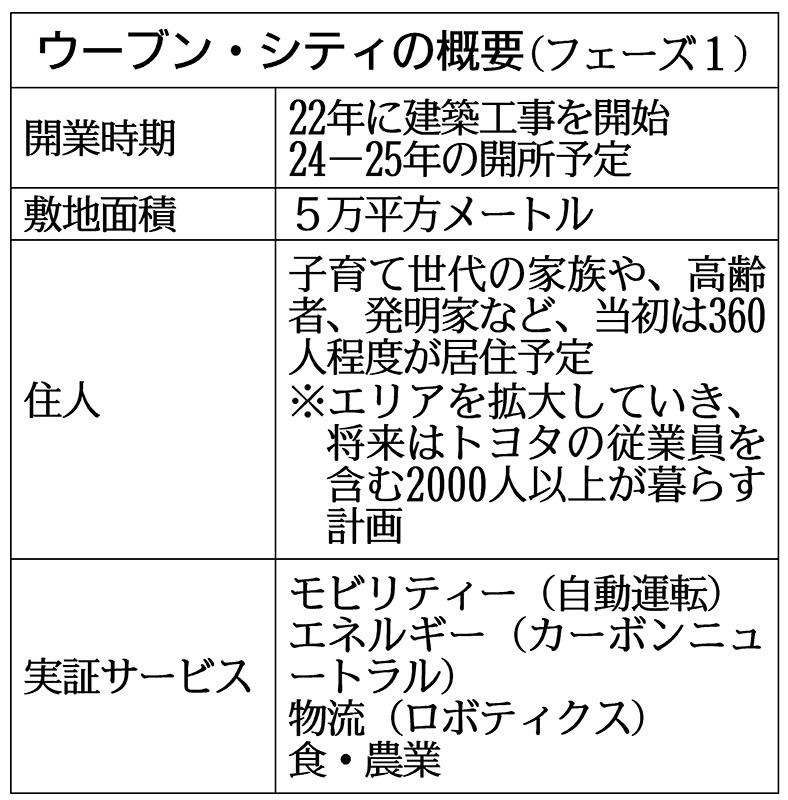The Woven City, a next -generation technology, which is being constructed by Toyota Motor, will celebrate its one -year milestone in February.Woven Planet Holdings (HD, Chuo -ku, Tokyo), a subsidiary of the company, will lead the development with advanced methods based on software that make full use of virtual reality.On the other hand, as it is actually a town where people live, it is pursuing a real use of various facilities from the development stage.Fusion of Woven's software and real knowledge that Toyota has cultivated through car making, aiming to realize an innovative city.(Nagoya / political year Sakie)
Verification in the development starting "alter ego city"
The basis of Woven City's development is the concept of "software first", which precedes software development and considers hardware design based on its specifications.Kota Oishi, who works on service development, explains, "Once you make it, you will first make something irreparable from software."
There are two big points.The construction of a platform (foundation) that allows all data in the city to be used at once, and the use of digital twin that builds and verifies a high -precision simulation environment close to the real world.
The construction of the platform is to connect all the devices in the city by network and use various data and applications (applied software) via API (applied program interface).

For example, it is an image that functions that could only be used with products from specific manufacturers can be used on newly developed wearable devices.Oishi says, "If you can build a real version of Google Cloud Platform (cloud service provided by Google)," Oishi says.
The second digital twin is a simulation technology that creates elaborate “town alter ego” in a digital space, designing the design of the city, such as the arrangement of buildings, and the developed services.A building or bridge that cannot be easily broken once it is made in real life can be redoed in a digital space.Oishi says, "If you use digital twin, you can reduce the number of prototypes and verify places that cannot be reproduced in real life, for example, a huge typhoon."
Data from practical work
Conveyor is equipped with three colors of red, yellow, and green, installed in the office of Nihonbashi, Tokyo, which is a unique development site that is developed by such software.In Woven City, we plan to build a logistics system that delivers the arrived luggage to each house, and demonstrates the sorting of household delivery delivered to each house as if it were in the factory.。Masaku Masada, who works on logistics services, explains, "I will check the" original units "such as the time and human resources, such as a series of work in actual work and reflect it in the simulation."
You can't tell about the difficulty of working, burden, or reduced efficiency due to workers' fatigue unless you actually try it.Insert the data that appeared in the work demonstration and simulate with a digital twin, and based on this, a person makes a proposal for improvements such as the work line and verifies it again on the prototype line."We are trying to fuse digital twin and Toyota production method (TPS)," said Masada.
Toyota's strength is the hardware knowledge that has been accumulated for more than 80 years since its founding.Woven City is trying to create an unprecedented city by combining advanced technology while making use of the goodness of the past.In terms of production, there are plenty of TPS, which is constantly improving, and the know -how to make hard and compact hardware.Oishi says, "Software alone can never beat Google from now on. I want to make use of my hardware strengths to create uniqueness."
The establishment of a new city platform is Woven City's Ichirizuka.Unprecedented demonstration projects will finally start to embody.
Autonomous driving in the future vehicle, a test runway installation
Woven City is a demonstration city built on the site of the Higashi Fuji Factory (Susono City, Shizuoka Prefecture) in Toyota Motor Motor Motor Japan.We are conducting planning and development based on the concept of "human -centered", "demonstration experiment", and "unfinished", "Test course for future mobility", such as autonomous driving, MAAS (vehicle services), robot logistics, (Akio Toyoda President)is.Vyalque Ingels, a Danish architect who was also involved in the design of Google's new headquarters, is responsible for urban design.
There are three types of towns for autonomous driving cars, people and small mobility, and pedestrians on the ground, and in the basement, there will be a logistics road by autonomous cars and robots.In fact, various services are performed in the environment where people live.Services include 12 areas, including mobility, energy, and IoT (Internet of things).As of September 2001, about 4,900 individuals and corporations have applied for their partners.In 2010, we plan to start architectural construction.
Nikkan Kogyo Shimbun January 11, 2022
